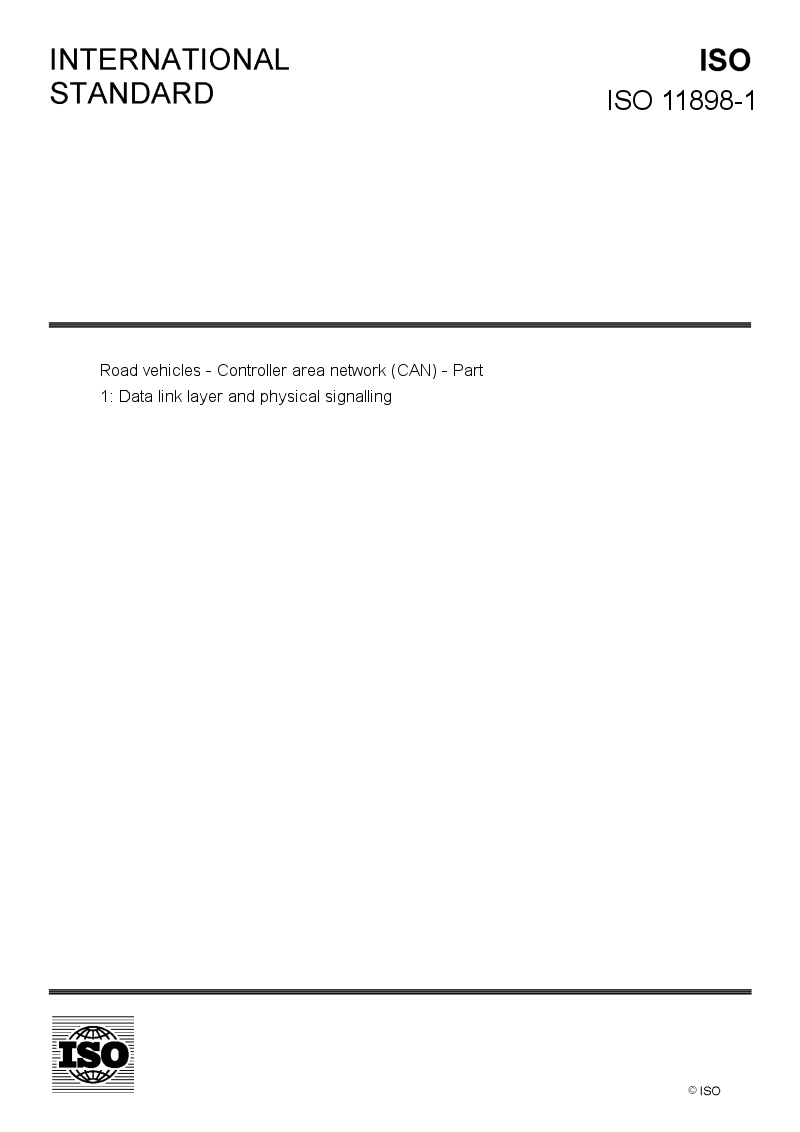Bus power is fed to a node's male connector and the bus draws power from the node's female connector. The CAN standard was devised to fill this need. An active error flag can be transmitted by a node when an error has been detected. Archived from the original PDF on The design provides a common supply for all the transceivers. All nodes on the CAN network must operate at the same nominal bit rate, but noise, phase shifts, oscillator tolerance and oscillator drift mean that the actual bit rate may not be the same as the nominal bit rate. 
| Uploader: | Faegis |
| Date Added: | 1 June 2014 |
| File Size: | 26.57 Mb |
| Operating Systems: | Windows NT/2000/XP/2003/2003/7/8/10 MacOS 10/X |
| Downloads: | 82495 |
| Price: | Free* [*Free Regsitration Required] |
If a logical 1 is transmitted by all transmitting nodes at the same time, then a logical 1 is seen by all of the nodes, including both the transmitting node s and receiving node s. From Wikipedia, the free encyclopedia. A message or Frame consists primarily of the ID identifierwhich represents the priority of the message, and up to eight data bytes. ISO uses a two-wire balanced signalling scheme.
There are two kinds of overload conditions that can lead to the pfd of an overload flag:. A subsystem may need to control actuators or receive feedback from sensors. Unfortunately, the new ISO standard has not been published. Interfaces are listed pdc their speed in the roughly ascending order, so the interface at the end of each section should be the fastest.
There are several CAN physical layer and other standards:. External links For more information on the standard, please refer to the following sites Wikipedia: Several are standardized for a business area, although all can be extended by each manufacturer.
ISO 11898-1:2015
Nonetheless, several de facto standards for mechanical implementation have emerged, the most common being the 9-pin D-sub type male connector with the following pin-out:. A CAN network can be configured to work with two different message or "frame" formats: The message is transmitted serially onto the bus using a non-return-to-zero NRZ format and may be received by all nodes.
The transfer layer is responsible for bit timing and synchronization, message framing, arbitration, acknowledgement, error detection and signaling, and fault confinement.

This may lead to eventually entering the "error passive" state. The absence of a complete physical layer specification mechanical in addition to iiso freed the CAN bus specification from the constraints and complexity of physical implementation.
The specific problem is: All fields in the frame are stuffed with the exception of the CRC delimiter, ACK field and end of frame which are a fixed size and are not stuffed.

Synchronization starts with a hard synchronization on the first recessive to dominant transition after a period of bus idle the start bit. If a logical 0 is being transmitted by one or more nodes, and a logical 1 is being transmitted by one or more nodes, then a logical 0 is seen by all nodes including the node s transmitting the logical 1.
However it left CAN bus implementations open to interoperability issues due to mechanical incompatibility. Typical values of supply voltage on such networks are 7 to 30 V. If one node transmits a dominant bit and another node transmits a recessive bit then there is a collision and the dominant bit "wins". Technical and de facto standards for wired computer buses.
The devices that are connected by a CAN network are typically sensorsactuatorsand other control devices. As a consequence, all other stations also detect 11988-1 overload condition and on their part start iao of an overload flag. This page was last edited on 15 Septemberat During a recessive state the signal lines and resistor s remain in a high impedances state with respect to both rails.
The electrical aspects of the physical layer voltage, current, number of conductors were specified in ISO This specification has two parts; part A is for the standard format with an bit identifier, and part B is for the extended format with a bit identifier.
CAN FD ISO - Increased data rate, extension CAN standard | Softing
With these specifications, CAN FD can process greater quantities of diagnostic data, and saves both time and costs. In the fields where bit stuffing is used, six consecutive bits of the same polarity or are considered an error. Overload frames and error frames are not preceded by an interframe space and multiple overload frames are not separated by an interframe space. Each node that receives the frame without finding an error, transmits a dominant level in the ACK slot and thus overrides the recessive level of the transmitter.
The CAN specifications use the terms "dominant" bits and "recessive" bits where dominant is a logical 0 actively driven to a voltage by the transmitter and recessive is a logical 1 passively returned to a voltage by a resistor.

No comments:
Post a Comment